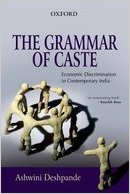Until sometime back caste was viewed as a kind of odd subject, something which primarily concerned scholars interested in the traditional social order of Indian society, social anthropologists and sociologists. Economists who engaged with the processes of planning for development and change, hardly ever studied caste or took note of its dynamics in their analysis of Indian economy. Even historians did not take caste very seriously. The ‘progressive’ and ‘forward-looking’ scholars and social scientists worked with the categories of class and other econo-mic modes of classification. Caste was to dis-appear with time, with the process of moder-nization and development.
While Indian society has made significant progress over the past six decades and demo-cratic form of governance has been institu-tionalized rather smoothly, there seems to be no sign of caste disappearing. On the cont-rary, many would say that the public presence of caste has in fact increased over the past fifty years.
From the matrimonial columns of the English speaking national newspapers read by the middle-class urban Indians to the electoral political processes at various levels of demo-cratic governance, the reality of caste conti-nues to prevail. Over the last few years the academic attitude towards caste has also chan-ged. Caste is no longer a taboo subject. Ashwini Deshpande’s book proves this point.

